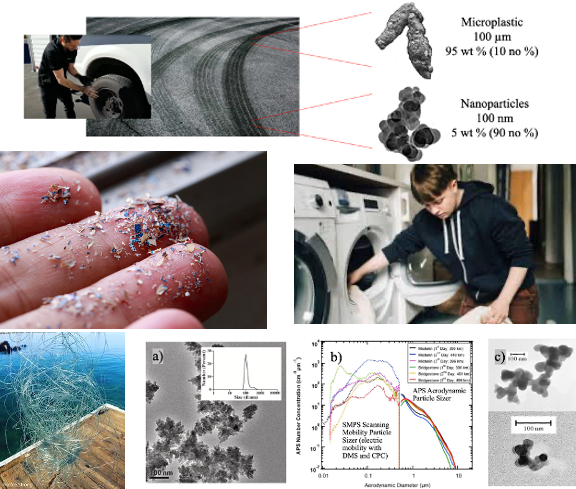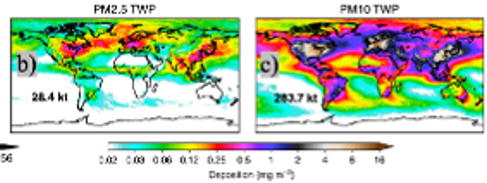Micro- and Nanoplastics
Microplastics are the results of mechanical and chemical degradation of plastics either in the natural enviroment, such as fishing line residue in the ocean, or in anthropogenic processes, such as tire wear particles, and dryer lint. Some microplastics are intentionally included in cosmetics. Microplastics are particles between 1 and 1,000 micron and nanoplastics are smaller than 1 micron. In terms of mass, microplastics are a greater fraction, in terms of number, nanoplastics may be a much larger fraction of particulate plastics in the environment. These two classes of particulate pollution may pose siginificantly different impacts.
The impact of micro and nanoplastics on the environment and on people is largely unknown. In a few cases we know there are dangers such as the release of PPD-Q from tire wear particles which is detrimental to some fish. Microplastics have been found in almost all life and in all environments so there is concern that we are unintentionally impacting nature. It should be emphasized that plastics are in themselves basically inert so microplastics and nanoplastics might pose no significant risk. However, most agree it is better to understand thier distribuiton and impacts earlier than later if there is a problem. The graphic above is from a Nature article where a computer simulation was used to show how the wind and water disperses nano (PM 2.5) and micro (PM 10) plastic particles around the world.
The purpose of this website is to encourage and organize high school students and teachers from across the US, Mexico, and Canada to become involved in the developing understanding of the impact of micro and nanoplastics on the environment and people.
This project is funded by the US National Science Foundation (CBET-2409292 Mechanism for nanoparticle release from automotive tire tread. to Beaucage with ammendments for RET, and REU) with contributions from St. Xavier High School (St. X), Cincinnati OH, the University of Cincinnati (UC), Akron Rubber Development Laboratory (ARDL), the Health Effects Laboratory Division (HELD) of NIOSH/CDC, and Argonne National Laboratory, Advanced Photon Source.
The project is run by Daniel Kim (KimD14190 @ stxavier.org) who is a senior at St. X with help from Dr. James Laughlin (RET), Enviornmental Science Teacher, Prof. Greg Beaucage (beaucag @ uc.edu), Hong-Sik Eom (PhD candidate), and Caroline Rosen (Undergraduate Chemical Engineer/REU student) at UC, Dr. Ed Terrill (ARDL), Dr. Kabir Rishi and Dr. Pramod Kulkarni (NIOSH), and Dr. Jan Ilavsky (and Team) Argonne National Laboratory.

